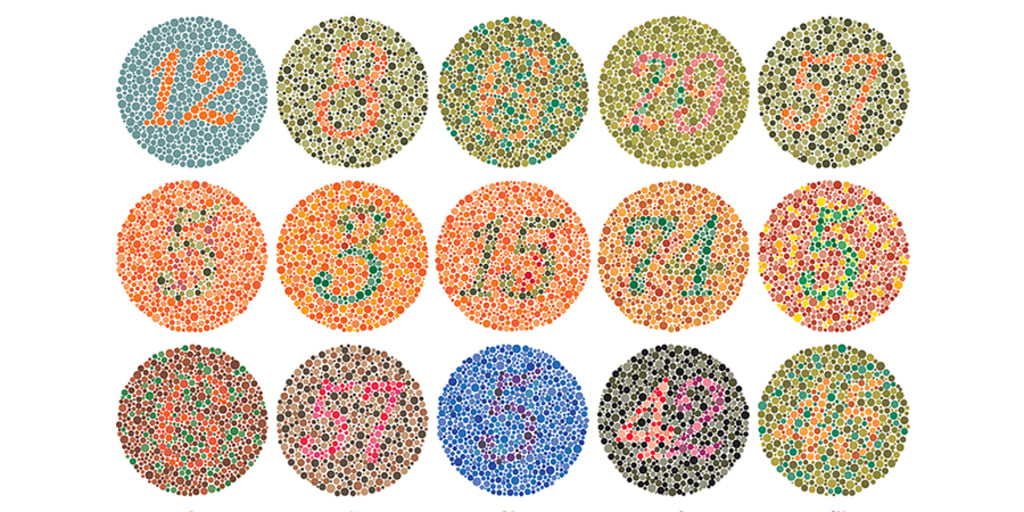Blue-Green Color Blind Test: Understanding and Diagnosing Color Vision Deficiency

Color blindness, specifically blue-green color blindness, is a condition that affects a significant portion of the global population. This condition can make it difficult for individuals to distinguish between certain hues, leading to challenges in daily life, such as identifying traffic lights, reading colored charts, or choosing clothing. Early diagnosis through a blue-green color blind test is essential for understanding and managing this condition. In this article, we’ll explore what blue-green color blindness is, how the test works, and discuss a fun variant of the test designed for children: the color blind test for toddlers with animals.
What is Blue-Green Color Blindness?
Defining Blue-Green Color Blindness
Blue-green color blindness refers to difficulty distinguishing between shades of blue and green, which occurs when the photoreceptors (cones) in the retina that are responsible for detecting these colors are not functioning properly. This type of color blindness is relatively less common compared to red-green color blindness but can still pose challenges in daily life.
There are two primary categories of blue-green color blindness:
- Tritanomaly (Blue Weakness): People with tritanomaly have a reduced sensitivity to blue light, making it difficult to differentiate between blue and green hues. These individuals may also struggle with distinguishing between yellow and violet shades.
- Tritanopia (Total Blue-Green Color Blindness): This is a more severe form, where individuals cannot perceive blue or green at all. They may see these colors as gray or simply cannot distinguish between them.
While blue-green color blindness is typically genetic, it can also result from other factors like aging, eye diseases, or medication use.
The Impact of Blue-Green Color Blindness
For individuals with blue-green color blindness, daily activities may become more challenging. For example:
- Reading Traffic Lights: Green and blue light signals may appear confusing, affecting traffic navigation.
- Picking Colors in Nature: People may have difficulty distinguishing between foliage or identifying objects based on their blue and green colors.
- Choosing Clothes: Selecting clothes that are blue or green can be challenging, especially when they are paired with other similar colors.
It is important to diagnose blue-green color blindness early to help individuals develop coping strategies.
The Blue-Green Color Blind Test
How Does the Blue-Green Color Blind Test Work?
The blue-green color blind test is designed to identify whether a person has difficulty distinguishing blue and green hues. These tests work by presenting a series of images with numbers or shapes embedded in them, formed using different color combinations. The key is that certain numbers or shapes are formed using blue and green hues, which individuals with blue-green color blindness may not be able to differentiate.
The most common tests used to diagnose blue-green color blindness include:
- Ishihara Plates: Typically used to diagnose red-green color blindness, these plates are sometimes modified to include blue and green hues to test for blue-green deficiencies. People with normal color vision can easily read the numbers or shapes on the plates, while those with color blindness may struggle to see the correct pattern.
- Farnsworth D-15 Test: This test involves sorting a series of colored discs in order of hue. It is effective for diagnosing blue-green color blindness as it includes shades that challenge individuals to differentiate between blue and green.
- Online Color Blindness Tests: Several online platforms offer blue-green color blind tests that present images with blue-green patterns or numbers. While not as comprehensive as clinical tests, they can be useful for initial screening and self-assessment.
Why is a Blue-Green Color Blind Test Important?
Diagnosing blue-green color blindness is crucial for several reasons:
- Adaptation: By identifying the condition early, individuals can learn coping strategies, such as memorizing color-coded tasks, relying on alternative cues (like shapes or positions), or using color filters to enhance contrast.
- Education and Career: People with blue-green color blindness may need accommodations in educational settings or jobs that require precise color identification, such as graphic design or driving. Therefore, it is important to design websites with color-blind-friendly practices to ensure accessibility and usability for all users.
- Safety: In situations like driving or reading traffic signals, knowing one’s limitations and using adaptive techniques can ensure safety.
Color Blind Test for Toddlers with Animals: A Fun Approach for Young Children
Why a Special Test for Toddlers?
Testing young children for color blindness can be challenging. Toddlers may not yet have the vocabulary or understanding to describe their experiences with colors. Moreover, traditional tests, like the Ishihara plates, can be too difficult or abstract for children to engage with. To overcome this, a color blind test for toddlers with animals is a more age-appropriate solution.
This version of the test is specifically designed to help diagnose color blindness in young children by using familiar, engaging elements like animals, which keep toddlers interested and involved in the testing process.
How the Color Blind Test for Toddlers with Animals Works
In this variant of the color blind test, images of animals—such as a red bird, green frog, or blue dolphin—are used to assess a toddler’s ability to distinguish between different colors. The test works as follows:
- Animal Images: Bright, bold-colored animals are shown to the child. These animals are typically depicted in red, green, or blue, depending on which colors the test is designed to assess.
- Interactive Testing: Toddlers may be asked to match animals of the same color, choose which animal is a specific color, or identify an animal when given a color name. If the toddler struggles to differentiate between the animals based on their colors, it could indicate a potential color vision deficiency.
- Engaging Content: The animals are depicted in a fun, easy-to-understand way that captures the child’s attention. The use of animals allows the child to focus on the shapes and colors in a less stressful environment than a standard clinical test.
Benefits of the Color Blind Test for Toddlers with Animals
- Fun and Engaging: By using animals, the test becomes interactive and less intimidating for young children. The child can enjoy the process without feeling anxious or overwhelmed.
- Accurate Early Diagnosis: Detecting color blindness early in life can help ensure that children get the support they need in their learning and play environments. Knowing about a color deficiency early on can assist in choosing appropriate teaching tools and activities.
- Non-Threatening: Toddlers are more likely to participate in a test that feels like a game rather than a medical procedure. This non-threatening approach makes it easier for caregivers and doctors to gather useful diagnostic information.
Example of the Test Process
For instance, a toddler may be shown a green frog and a red bird on a screen and asked, “Which animal is green?” If the child identifies the green frog correctly, they are likely able to distinguish between green and red. However, if the child picks the red bird or is unable to identify the color correctly, it may suggest a potential color vision deficiency. Additional tests would then be needed to confirm the results.
Conclusion
Blue-green color blindness, though less common than red-green color blindness, can present unique challenges in daily life, from navigating the world around us to performing tasks that require color differentiation. Taking a blue-green color blind test is crucial for diagnosing this condition and ensuring that individuals can make the necessary adjustments to lead normal, fulfilling lives.
For toddlers, a color blind test for toddlers with animals provides a fun, engaging, and non-intimidating way to detect potential color vision issues at an early age. By using colorful animal images, this test allows young children to participate in a meaningful and accurate diagnostic process. Early detection of color blindness in toddlers helps parents and teachers adapt their teaching methods, ensuring that children receive the support they need to thrive despite their color vision deficiency.
Incorporating these simple yet effective testing methods helps ensure that people of all ages can live more comfortably and confidently in a colorful world.
